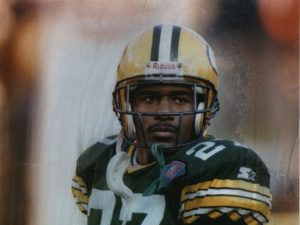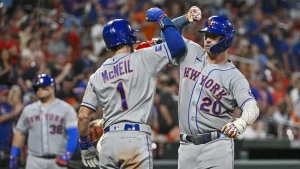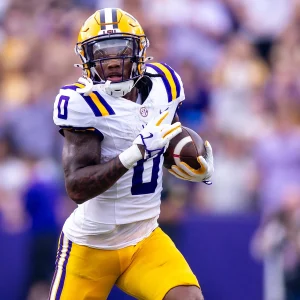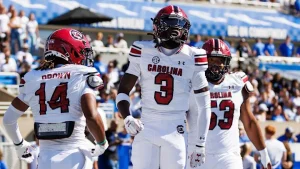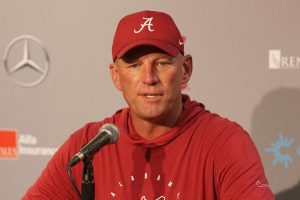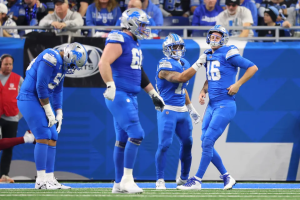In the world of college basketball, a player’s commitment can often be the beginning of a new journey—one that impacts not only their career but the future of the program they choose. Recently, one of the nation’s most exciting basketball prospects, [Insert Wilson’s full name], made waves by announcing his commitment to play college basketball at [University Name]. This announcement has sent ripples through the basketball community, as this commitment represents not only a significant moment in Wilson’s personal journey but also a major addition to the 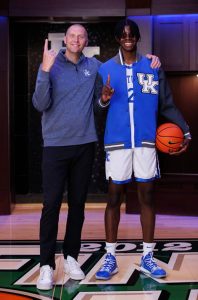 basketball program.
basketball program.
Wilson, who has been a standout player at the high school level, is widely regarded as one of the top recruits in the nation for the upcoming college basketball season. With impressive credentials, exceptional athleticism, and a rare combination of skills, Wilson’s commitment is one that will have a lasting impact on the team he joins. This article delves into Wilson’s rise as a basketball star, the implications of his commitment, and what fans, coaches, and analysts can expect moving forward as Wilson begins his journey at the college level.
Wilson’s Basketball Journey
Before making his mark on the recruiting circuit, Wilson was a standout at [High School Name] in [Location], where he quickly became known for his remarkable versatility, work ethic, and basketball IQ. Wilson’s combination of size, athleticism, and skill made him a matchup nightmare for opposing teams, and his ability to contribute in a variety of ways on the court solidified his status as a top-tier recruit.
What made Wilson even more impressive, though, was his consistency and leadership. Not just a dominant scorer, Wilson was a well-rounded player who could impact the game on both ends of the floor. His rebounding ability, defensive prowess, and high basketball IQ allowed him to influence the game in ways that many players his age could not. His leadership on the floor helped elevate his high school team to new heights, and his work ethic earned him the respect of coaches and teammates alike.
Wilson’s rise to prominence was rapid. During his junior and senior seasons, he played in some of the most high-profile tournaments and showcases across the country, consistently competing against some of the best players in the nation. His performances in national high school events, such as [Insert event name], caught the eyes of college scouts, and soon, Wilson became a coveted recruit for some of the top programs in college basketball.
As a result of his success, Wilson was ranked among the top players in the country, receiving offers from several powerhouse college basketball programs. His combination of size, athleticism, and skill made him a versatile asset for any program. However, the question remained: where would he play at the next level?
The Recruitment Process: A Highly Anticipated Decision
Wilson’s recruitment process was one of the most closely watched and discussed in recent memory. With offers from prestigious programs like [List universities], many college basketball fans and analysts were eager to see where he would ultimately land. The decision was not an easy one, as Wilson had to weigh several factors, including coaching staff, playing style, and the potential for development.
During the recruitment process, Wilson expressed that his primary focus was finding a program that would help him grow as a player while also allowing him to make an impact immediately. For many top recruits, this means finding a program with a strong track record of developing players, a clear plan for their playing time, and a culture that emphasizes teamwork, discipline, and player development.
As Wilson narrowed down his list of schools, his decision came down to a few key factors. First, he was looking for a program that would give him the opportunity to play early and contribute to the team’s success. As a highly rated recruit, Wilson knew that he could make an immediate impact, and he wanted a coaching staff that shared his vision. Additionally, Wilson considered the playing style of each program. His versatility as a player meant that he could fit into a variety of systems, but he wanted to ensure that he would be used in ways that showcased his full range of talents.
Another key factor in Wilson’s decision was the relationship he built with the coaching staff. Throughout the recruiting process, Wilson made it clear that he valued the connection between himself and the coaching staff. For him, it was important to find a group of coaches who not only saw his potential but also believed in his development as a player and a person.
Ultimately, after months of careful consideration, Wilson made his decision: he would commit to [University Name]. His decision sent shockwaves through the basketball world, as [University Name] had been building a strong program, and adding Wilson was seen as a major coup for their future. The university’s coaching staff, led by [Coach Name], quickly embraced Wilson’s commitment, and fans of the program began eagerly awaiting his arrival.
What Wilson Brings to the Program
Wilson’s commitment to [University Name] is not just significant because of his talent—though his skill set is undeniably impressive—but also because of the impact he can have on the program both immediately and long-term.
One of Wilson’s most notable attributes is his versatility. Standing at [insert height], with a wingspan of [insert measurement], he can play multiple positions and contribute in a variety of ways. He has the athleticism to guard several positions on defense, and on offense, he can score in a variety of ways—whether it’s driving to the basket, knocking down mid-range shots, or shooting from beyond the arc. His ability to stretch the floor while also attacking the rim makes him a difficult player to defend.
On the defensive end, Wilson’s length and quickness allow him to be a disruptive force. His ability to lock down opponents, contest shots, and disrupt passing lanes will make him an asset to [University Name]’s defense. His basketball IQ—combined with his physical tools—will help him make an immediate impact on that side of the ball, where he will likely be asked to guard some of the toughest players in the conference.
Offensively, Wilson’s skill set is one that will complement the existing players on the [University Name] roster. Whether he plays as a forward or guard, Wilson can provide scoring depth, playmaking ability, and leadership on the floor. His presence will take pressure off other players, and he has the potential to become a primary offensive option for [University Name].
In terms of leadership, Wilson’s experience as a top-tier high school player—where he was relied upon to carry much of the team’s load—will serve him well at the collegiate level. While the competition will be much stiffer in college basketball, Wilson has already shown that he thrives under pressure. As a result, he is likely to assume a leadership role within the locker room, providing mentorship to younger players and helping set a tone of hard work and commitment.
Impact on College Basketball and Future Expectations
Wilson’s commitment has broader implications for the college basketball landscape. As one of the top recruits in the country, his decision to join [University Name] elevates the program’s profile and strengthens their chances of success in the upcoming seasons. In a highly competitive college basketball environment, adding a player of Wilson’s caliber gives [University Name] the opportunity to contend with the best teams in the country.
Expectations for Wilson in his freshman season will be high, and it’s likely that he will play a key role for [University Name] right from the start. With his talent, work ethic, and leadership qualities, Wilson has the potential to make an immediate impact in college basketball. For fans of [University Name], his commitment signals a bright future ahead, with hopes that Wilson will not only help the team win games but also develop into a potential NBA prospect.
Conclusion
Wilson’s commitment to play college basketball at [University Name] represents a major milestone in his career and a turning point for the program. His decision was the culmination of a rigorous recruiting process, and it reflects his confidence in the coaching staff, the program’s direction, and his ability to contribute to the team’s success. For [University Name], Wilson’s addition will have an immediate impact, both on the court and in the locker room, as he brings a level of skill and leadership that few players can match.
As the basketball season approaches, fans will eagerly watch Wilson’s transition to college basketball, and they will look to him to become a key player in [University Name]’s pursuit of greatness. His commitment is not just a personal achievement, but a signal that [University Name] is ready to compete at the highest level of college basketball, with a future star leading the way.
